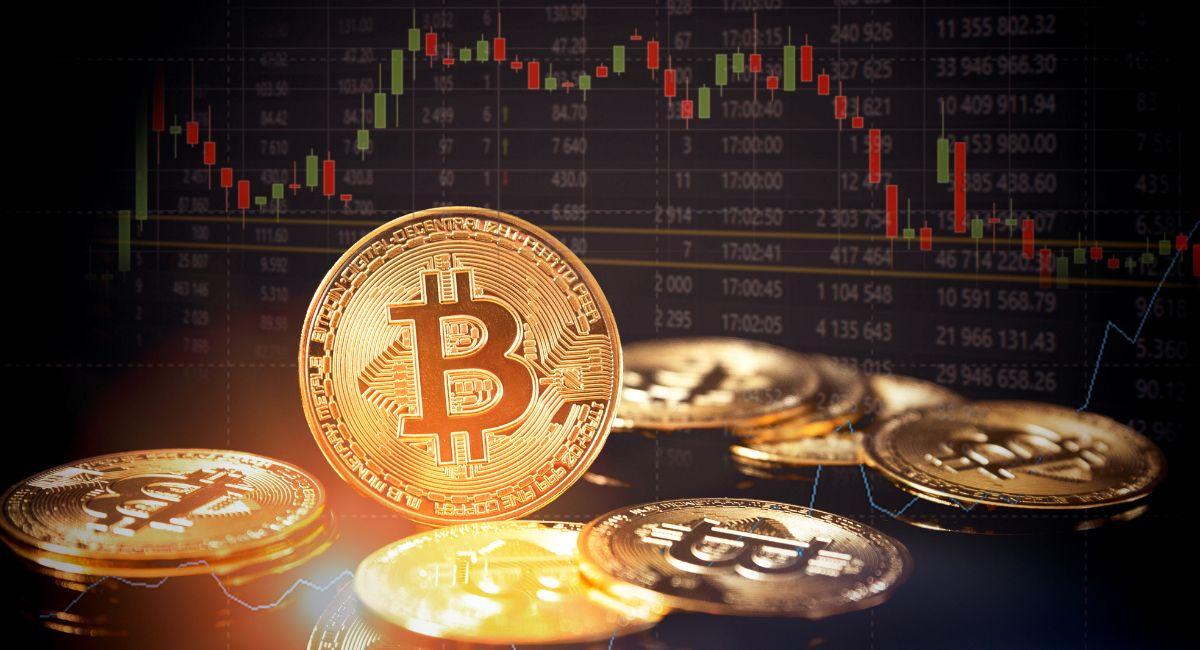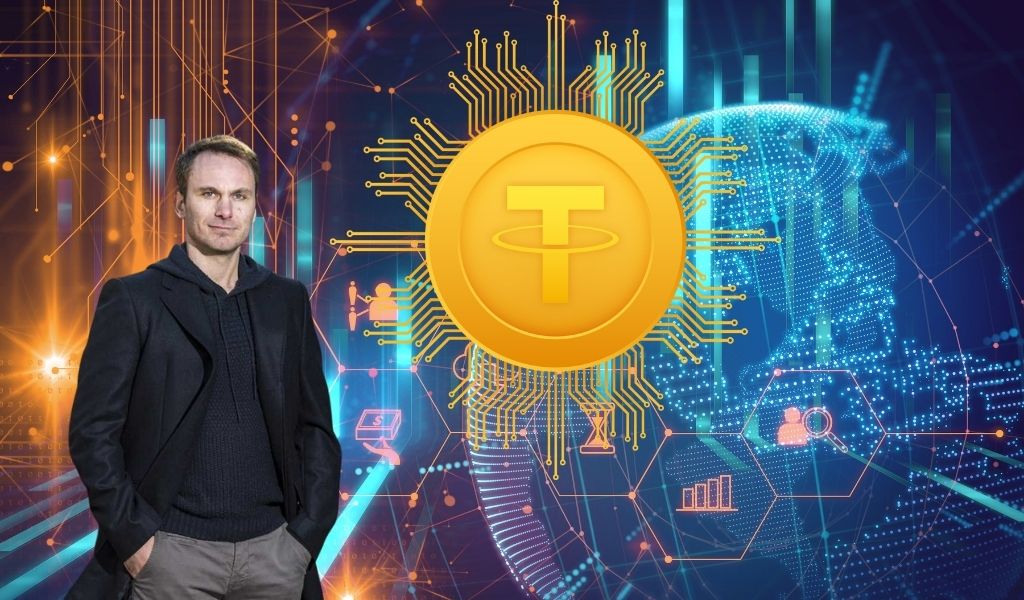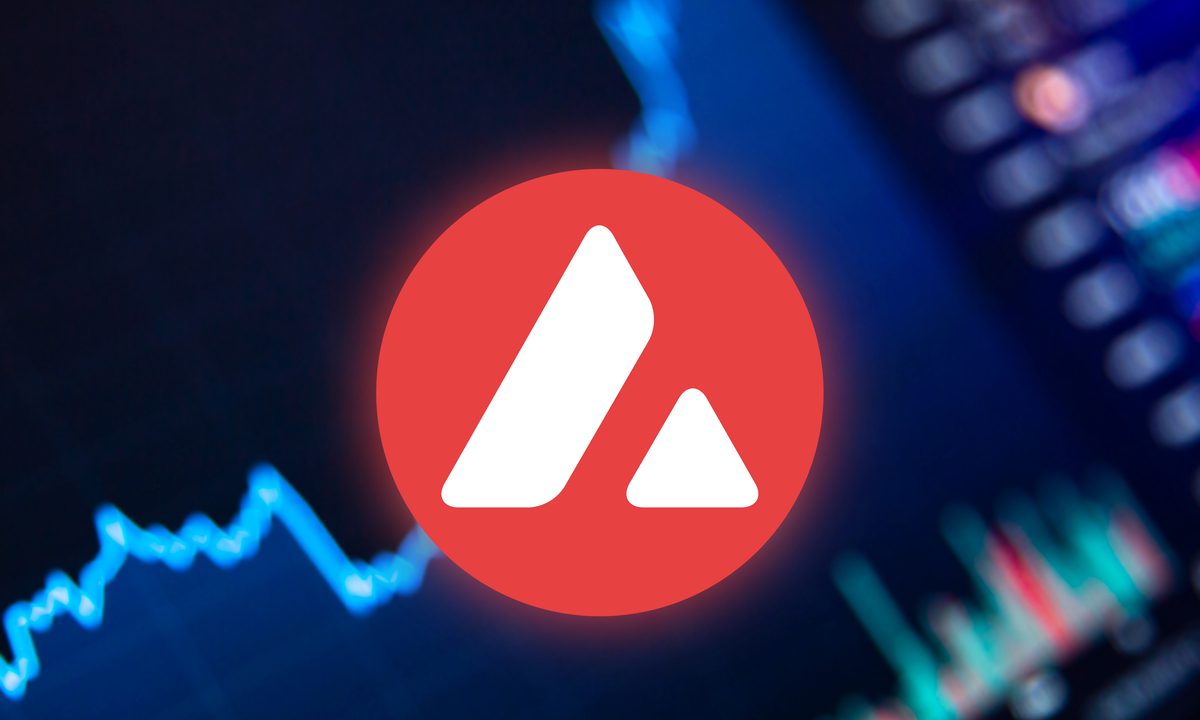Top 7 Altcoins to Watch for the Next Bull Run in 2024
As we approach 2024, the cryptocurrency market is primed for another bull run, offering significant opportunities for investors seeking outsized returns. While Bitcoin often dominates headlines, altcoins—cryptocurrencies other than Bitcoin—can offer even greater potential for growth. The altcoin market is incredibly diverse, with projects ranging from decentralized finance (DeFi) platforms to blockchain-based applications, each bringing unique value propositions to the table.
In this article, we will explore seven promising altcoins that should be on your radar for the next bull run in 2024. Each of these projects has strong fundamentals, innovative use cases, and the potential to outperform in the upcoming market cycle.
What are Altcoins?
Altcoins (alternative coins) refer to any cryptocurrency other than Bitcoin. Bitcoin, being the first cryptocurrency, set the foundation for the crypto space, but many others followed, attempting to address perceived limitations in Bitcoin or to introduce unique features. Altcoins include a wide range of cryptocurrencies with different functions, purposes, and technologies.
There are thousands of altcoins, each with its own specific use cases, technical protocols, and governance models. Examples of popular altcoins include Ethereum (ETH), Ripple (XRP), Litecoin (LTC), and Cardano (ADA).
Importance of Altcoins in the Crypto World
- Diversification of Use Cases: Many altcoins exist to address specific issues in the blockchain space or serve particular functions. For example:
- Ethereum (ETH): Introduced smart contracts, which enable decentralized applications (dApps).
- Ripple (XRP): Focuses on cross-border payment solutions.
- Chainlink (LINK): Provides real-world data to blockchain networks through decentralized oracles.
- Competition and Innovation: Altcoins drive innovation by offering alternatives to Bitcoin’s model. Ethereum introduced programmable smart contracts, which led to DeFi (Decentralized Finance) and NFTs. Others like Solana, Polkadot, and Binance Smart Chain focused on improving transaction speed, scalability, and reducing costs, pushing the entire space forward.
- Investment Opportunities: Altcoins often attract investors looking for faster growth than Bitcoin can offer. Because altcoins tend to be more volatile, they can provide higher returns in shorter periods, albeit with increased risk.
- Market Expansion: Altcoins have contributed to the expansion of the overall crypto market. The development of specialized altcoins for decentralized applications (dApps), finance (DeFi), gaming (GameFi), and other sectors has significantly broadened the scope of blockchain technology.
Life Cycle of Altcoins till 2024
The life cycle of an altcoin typically follows several key phases, with the following key trends up to 2024:
1. Creation and Initial Development (2011 – 2015):
- After Bitcoin’s success, early altcoins like Litecoin and Ripple emerged to address specific issues (e.g., faster transaction times).
- Altcoins in this phase were mainly used for simple transactions and payments.
2. Innovation and Expansion (2016 – 2019):
- The launch of Ethereum (2015) introduced smart contracts, enabling the creation of decentralized applications (dApps).
- The Initial Coin Offering (ICO) boom in 2017 allowed numerous new altcoins to enter the market, raising significant capital.
- However, many ICOs lacked clear use cases or viable products, leading to a market correction after the 2017 crypto bubble burst.
3. DeFi and NFT Explosion (2020 – 2022):
- Altcoins such as Chainlink (LINK), Uniswap (UNI), and Aave (AAVE) played a pivotal role in the rise of DeFi (Decentralized Finance), allowing users to borrow, lend, and trade without intermediaries.
- Non-Fungible Tokens (NFTs) became a significant trend, fueled by altcoins like Ethereum, Flow, and Tezos, which provided the infrastructure for NFT marketplaces.
- Stablecoins like USDT, USDC, and DAI also gained traction, offering a less volatile form of cryptocurrency tied to fiat assets.
4. Consolidation and Regulation (2023 – 2024):
- By 2024, many altcoins have matured, with projects focusing more on sustainability, scalability, and energy efficiency (e.g., Ethereum’s transition to Proof of Stake in 2022).
- Regulatory Scrutiny: With increasing adoption, regulators worldwide have started paying more attention to altcoins, particularly in DeFi and stablecoins.
- Institutional Adoption: Altcoins like Ethereum, Solana, and Avalanche have attracted interest from traditional financial institutions for DeFi applications, NFTs, and enterprise blockchain solutions.
Challenges for Altcoins in 2024
- Regulatory Pressure: As governments worldwide increase scrutiny of crypto projects, altcoins face pressure to comply with regulations, especially regarding securities laws, KYC/AML requirements, and DeFi activities.
- Market Saturation: Thousands of altcoins exist, but only a few have a significant user base and development community. Market saturation makes it difficult for new altcoins to stand out.
- Volatility and Risk: Many altcoins have seen extreme price volatility, which can lead to high rewards but also substantial risks for investors. Regulatory crackdowns and market corrections can negatively impact weaker altcoins.
Altcoins have evolved significantly from simple Bitcoin alternatives to driving innovations such as smart contracts, decentralized finance, and NFTs. By 2024, they continue to diversify the blockchain ecosystem but face challenges like regulatory pressure and market competition. However, their importance in pushing the boundaries of blockchain technology remains indisputable.
Also, read – Top 10 Intriguing Reasons Reduced Bitcoin Supply Spark Altcoins: Halving as a Catalyst
Top 7 Altcoins in 2024
1. Ethereum (ETH): The Backbone of Decentralized Applications
No list of altcoins would be complete without Ethereum, the second-largest cryptocurrency by market capitalization and the foundation of decentralized applications (dApps). Ethereum is not just a cryptocurrency; it’s a platform that enables developers to build decentralized applications, smart contracts, and DeFi protocols.
Why Ethereum?
- Ethereum 2.0: Ethereum’s transition to Ethereum 2.0, completed in 2022, upgraded its consensus mechanism from proof-of-work (PoW) to proof-of-stake (PoS), dramatically improving its scalability and energy efficiency. With Ethereum 2.0 fully integrated, the network now has the capability to handle a significantly higher transaction throughput, making it more attractive for developers and users alike.
- DeFi and NFTs: Ethereum continues to be the dominant platform for decentralized finance (DeFi) and non-fungible tokens (NFTs). With these sectors showing no signs of slowing down, Ethereum is well-positioned to benefit from increased adoption and innovation.
2. Polkadot (DOT): The Interoperability Powerhouse
Polkadot is a multi-chain network designed to enable different blockchains to communicate with each other. Its interoperability feature allows multiple blockchains to transfer data and value across chains, something that will be critical as the blockchain ecosystem becomes more interconnected.
Why Polkadot?
- Cross-Chain Functionality: Polkadot’s parachain architecture allows for seamless communication between multiple blockchains. This interoperability could make Polkadot a key player in the decentralized future, where various blockchains will need to work together.
- Parachain Auctions: In 2021 and 2022, Polkadot held successful parachain auctions, where projects bid for slots to launch on the Polkadot network. With numerous high-profile projects already building on Polkadot, the ecosystem is poised for rapid expansion.
3. Solana (SOL): High-Speed, Low-Cost Transactions
Solana is often referred to as the “Ethereum killer” due to its incredibly fast transaction speeds and low costs. With a throughput of up to 65,000 transactions per second (tps) and minimal fees, Solana has emerged as a powerful competitor in the smart contract and DeFi space.
Why Solana?
- High Performance: Solana’s unique Proof-of-History (PoH) consensus mechanism allows for extremely fast transaction speeds without sacrificing decentralization. This makes it a strong candidate for applications that require high throughput, such as DeFi protocols and NFT marketplaces.
- Developer Ecosystem: Solana has attracted a thriving developer community, with a growing number of decentralized applications, NFT platforms, and DeFi protocols being built on the network. This expanding ecosystem strengthens Solana’s position as a top contender for the next bull run.
4. Avalanche (AVAX): A Scalable DeFi Ecosystem
Avalanche is another Ethereum competitor that has gained significant traction due to its high scalability, low transaction fees, and strong developer community. It aims to provide a platform for decentralized applications and enterprise blockchain solutions.
Why Avalanche?
- Avalanche Consensus Protocol: Avalanche uses a novel consensus mechanism that allows for near-instant finality and high throughput without compromising decentralization. This positions Avalanche as a highly scalable solution for DeFi applications and other blockchain-based services.
- Growing DeFi Ecosystem: The Avalanche ecosystem has seen rapid growth in the DeFi sector, with numerous platforms and protocols, such as Aave and Curve, integrating with the network. This growing DeFi ecosystem is likely to drive demand for AVAX during the next bull run.
5. Chainlink (LINK): The Bridge Between Blockchain and Real-World Data
Chainlink is a decentralized oracle network that enables smart contracts on blockchains to securely interact with real-world data, APIs, and other external data sources. Oracles are critical to the functionality of smart contracts, as they provide the data needed to trigger contract executions.
Why Chainlink?
- Dominant Oracle Solution: Chainlink is by far the most widely used decentralized oracle network, with integrations across numerous blockchain platforms and DeFi protocols. Its ability to provide reliable, tamper-proof data makes it indispensable to the DeFi sector.
- Cross-Chain Interoperability: Chainlink is also working on enabling cross-chain interoperability, which will allow smart contracts on different blockchains to communicate and exchange data. This functionality could further solidify Chainlink’s position as the go-to oracle solution in the multi-chain future.
6. Cardano (ADA): A Research-Driven Blockchain
Cardano is a third-generation blockchain platform that aims to solve many of the scalability, security, and sustainability issues facing earlier blockchain networks like Bitcoin and Ethereum. Known for its research-driven approach, Cardano focuses on building a secure and scalable platform for decentralized applications and smart contracts.
Why Cardano?
- Ouroboros Proof-of-Stake (PoS): Cardano’s consensus algorithm, Ouroboros, is a unique PoS protocol designed for high security and scalability. This makes Cardano one of the most energy-efficient blockchain networks, which could become increasingly important in a world focused on sustainability.
- Smart Contracts and dApps: In 2021, Cardano introduced smart contract functionality through the Alonzo upgrade. Since then, the ecosystem has been steadily growing, with new decentralized applications being built on the platform. With Cardano’s research-focused development approach, the network is well-positioned for future growth.
7. Cosmos (ATOM): The Internet of Blockchains
Cosmos is an ambitious project that aims to create an “Internet of Blockchains,” where multiple blockchains can communicate and interact with each other in a decentralized manner. Cosmos seeks to solve the scalability and interoperability issues that currently plague the blockchain space.
Why Cosmos?
- Interoperability Focus: Cosmos’ core technology, the Inter-Blockchain Communication (IBC) protocol, allows different blockchains to connect and exchange information. This interoperability feature will be increasingly valuable as the number of blockchain networks grows.
- Expanding Ecosystem: Cosmos has seen rapid ecosystem growth, with multiple blockchains, including Binance Chain and Terra, integrating with the Cosmos Hub. As more projects adopt Cosmos’ IBC protocol, the demand for ATOM could increase significantly during the next bull run.
Key Factors Driving Altcoin Performance in 2024
Several factors will influence the performance of these altcoins in the next bull run. Understanding these factors can help you make informed investment decisions.
1. Institutional Adoption
Institutional interest in cryptocurrencies has been growing steadily, with major companies and financial institutions exploring blockchain technology and cryptocurrency investments. This trend is likely to continue in 2024, driving demand for top altcoins like Ethereum, Chainlink, and Polkadot.
2. DeFi and NFT Growth
The decentralized finance (DeFi) and non-fungible token (NFT) sectors have been among the fastest-growing areas in the cryptocurrency space. Altcoins that support DeFi and NFT ecosystems, such as Ethereum, Solana, and Avalanche, are likely to see increased demand as these sectors continue to expand.
3. Regulatory Developments
Regulation remains one of the biggest uncertainties in the cryptocurrency market. While some countries are moving towards clearer regulations, others are taking a more cautious approach. Altcoins that comply with regulatory requirements or offer strong use cases in heavily regulated industries, such as Chainlink with its focus on real-world data, may be better positioned to thrive in a more regulated environment.
4. Blockchain Interoperability
As the blockchain ecosystem continues to grow, interoperability between different networks will become increasingly important. Altcoins that focus on cross-chain functionality, such as Polkadot, Cosmos, and Chainlink, are likely to benefit from this trend as they enable seamless communication and data transfer between various blockchain networks.
Conclusion: Preparing for the Next Bull Run
The next bull run in 2024 could bring significant opportunities for altcoin investors. While Bitcoin will likely remain a key player, the potential for higher returns in the altcoin market cannot be ignored. Ethereum, Polkadot, Solana, Avalanche, Chainlink, Cardano, and Cosmos are all projects with strong fundamentals, innovative use cases, and active development teams, making them excellent candidates for investment during the next bull run.
However, as with any investment, it’s important to conduct thorough research and understand the risks involved. Cryptocurrency markets are inherently volatile, and while altcoins offer high potential rewards, they also come with significant risks. By focusing on projects with strong use cases, established communities, and long-term viability, you can position yourself to take advantage of the next wave of cryptocurrency growth in 2024.
Stay informed with daily updates from Blockchain Magazine on Google News. Click here to follow us and mark as favorite: [Blockchain Magazine on Google News].
Get Blockchain Insights In Inbox
Stay ahead of the curve with expert analysis and market updates.
latest from tech
Disclaimer: Any post shared by a third-party agency are sponsored and Blockchain Magazine has no views on any such posts. The views and opinions expressed in this post are those of the clients and do not necessarily reflect the official policy or position of Blockchain Magazine. The information provided in this post is for informational purposes only and should not be considered as financial, investment, or professional advice. Blockchain Magazine does not endorse or promote any specific products, services, or companies mentioned in this posts. Readers are encouraged to conduct their own research and consult with a qualified professional before making any financial decisions.

 Bitcoin
Bitcoin  Ethereum
Ethereum  Tether
Tether  Solana
Solana  XRP
XRP  Dogecoin
Dogecoin  USDC
USDC  Cardano
Cardano  Lido Staked Ether
Lido Staked Ether  TRON
TRON  Avalanche
Avalanche  Toncoin
Toncoin  Stellar
Stellar  Shiba Inu
Shiba Inu  Wrapped stETH
Wrapped stETH  Wrapped Bitcoin
Wrapped Bitcoin  Polkadot
Polkadot  Chainlink
Chainlink  WETH
WETH  Bitcoin Cash
Bitcoin Cash  Sui
Sui  Pepe
Pepe  NEAR Protocol
NEAR Protocol  LEO Token
LEO Token  Litecoin
Litecoin  Uniswap
Uniswap  Wrapped eETH
Wrapped eETH  Aptos
Aptos  Internet Computer
Internet Computer  USDS
USDS  Hedera
Hedera  Cronos
Cronos  Ethereum Classic
Ethereum Classic  POL (ex-MATIC)
POL (ex-MATIC)  Render
Render  Ethena USDe
Ethena USDe  Bittensor
Bittensor  Artificial Superintelligence Alliance
Artificial Superintelligence Alliance  Arbitrum
Arbitrum  Dai
Dai  Celestia
Celestia  WhiteBIT Coin
WhiteBIT Coin  Filecoin
Filecoin  Bonk
Bonk  OKB
OKB  Stacks
Stacks  dogwifhat
dogwifhat 



